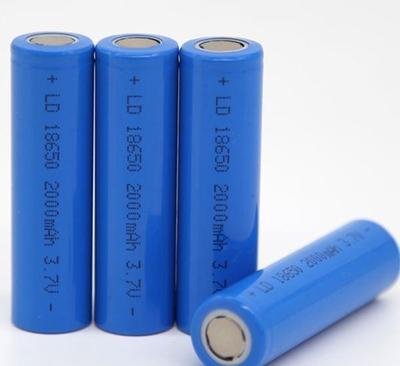18650 battery is a type of lithium-ion rechargeable battery commonly used in a variety of applications, from consumer electronics to electric vehicles. Here’s what you need to know about them:

Key Characteristics:
1. Size:
The name “18650” refers to its dimensions: 18mm diameter, 65mm length.
2. Capacity:
The capacity typically ranges from 1200mAh to 3500mAh, depending on the specific model.
3. Voltage:
A fully charged 18650 battery has a nominal voltage of 3.6V to 3.7V, and when fully charged, it reaches about 4.2V. Discharge typically stops around 2.5V to 3.0V.
4. Chemistry Types:
Lithium-ion (Li-ion): The most common chemistry used for high energy density.
Specific types include Lithium Nickel Manganese Cobalt Oxide (NMC), Lithium Cobalt Oxide (LCO), and Lithium Iron Phosphate (LiFePO4), each with different performance characteristics such as safety, lifespan, and energy density.
5. Energy Density:
18650 battery generally have high energy density, making them suitable for high-demand applications like electric vehicles, laptops, and power tools.
6. Cycle Life:
The cycle life can vary widely based on the chemistry and usage, but typically 18650 cells can last 300-500 cycles (charge and discharge) before their capacity begins to degrade significantly.
7. Discharge Rate:
The C-rating (which indicates how fast the battery can be safely discharged) is important for certain applications. 18650 battery cells can have discharge rates from 2C to 30C or higher, meaning they can discharge rapidly if needed.
8. Protection:
Protected cells have a built-in protection circuit that prevents overcharging, over-discharging, and short-circuiting.
Unprotected cells do not have this circuit and require external safety management (such as in battery packs with Battery Management Systems, or BMS).
Common Uses:
1. Electric vehicles (EVs) and e-bikes.
2. Power tools.
3. Laptops, flashlights, and portable electronics.
4. Battery packs for solar power storage and DIY projects.
Safety Considerations:
1. Overcharging or discharging beyond recommended limits can cause heating, which may lead to thermal runaway and possible explosion.
2. Use of a Battery Management System (BMS) is critical in battery packs to maintain safe operation.
